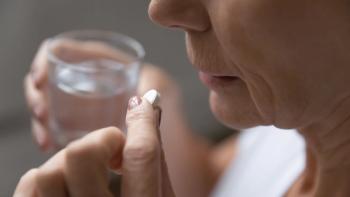
Help Increasing Medication Adherence in Post-transplant Children
It is not often that we see a well-designed study integrating data collected from digital health tools, and then used by clinicians to guide care, but in this study there are some applications to pharmacy.
A recent study published in the American Journal of Kidney Disease offered a solution for adherence.1 The TAKE-IT trial focused on using a smart pill organizer, and personal coaching in young patients with kidney transplants. Now, I've talked about several studies already using digital health interventions, such as smart pill bottles, bioingestible sensors, or virtually observed therapy and their impact on adherence. What stands out with this trial is the population, the design, and the use of the interventions for patient care.
The TAKE-IT study was a multicenter clinical trial was run in the United States and Canada, and enrolled patients between the ages of 11 to 24 years of age with a functioning graft. Patients were randomized into 2 different cohorts. The control arm was given an electronic pillbox monitor, and provided standard of care. The intervention arm also used an electronic pillbox monitor, but was also given alerts from the device, and had a coach who reviewed their adherence history from the device to help with better strategies to be adherent to therapy.
The smart pill organizer (called an e-pill box by the researchers) was made by Vaica, a digital health company focused on medication adherence, based in Tel-Aviv, Isreal.2 The device is essentially a smart pill blister container that a patient can preload with medication, or slide in a blister package prepared by a pharmacy. When a patient takes their medication, it can detect the removal of medications, and uploads the data to a database. Lastly, it can provide alerts to the patient to help them remember to take their medication, promoting adherence.
Now, this multicomponent model of approach to adherence is what stands out, compared to other trials. The movement seems to be for recent trials to throw some technological solution at patients, and watch to see if it makes them more adherent to therapy. Where TAKE-IT stands out, is that the data collected throughout the study was used to help address nonadherence with patients to help them on a personal level. It was actionable data, and I think that's why the results demonstrate some positive effects.
The study was run for a total of 15 months, over a nearly 5-year period, and based on data collected from the electronic pill monitors, the intervention group (N= 81) was more adherent to therapy overall, and also took their medications on time during the day, when compared to the control group (N = 88). It is important to note this is a rather large sample for this population, especially considering the rates of younger adult transplants is a small group overall.
Now, there are some limitations here. An interesting finding was that tacrolimus (used to prevent host-rejection of an organ for transplant) was the same between the intervention or control group despite the difference in measured adherence. The authors thought this could be due to several reasons, such as patients taking their drug more often before a lab test, much like people who brush teeth more often before a dentist visit.
A major point I want to make is that the intervention group had several components offered to help them with their adherence, including reminders from the electronic pill monitor, and a coach that they saw every 3 months. It's hard to say which made a difference, and because of that, the researchers are launching TAKE-IT TOO. This study will assess whether a more realistic model, where a coach is not used to help evaluate and encourage adherence, can still produce similar results. Also, the electronic pill reminder will be a smaller version to provide a better experience for the teen population, and factors a better form of travel between home and school.
I am a little conflicted here. Based on my reading of previous research using electronic adherence tools, this has been one of the only ones using the data by the team to help with adherence. I recognize the use of the coach can be somewhat pricey and not realistic within specific models, especially considering that a visit with a coach lasted around 30 minutes on average, every 3 months. But, I feel it was the synergistic effect of using actionable data to reinforce and help with adherence by the coach that made the impact. The device tracked the adherence rates and raised alarms, and the coach promoted adherence. That's all there is to it, which seems to be missed by other trials.
To be honest, this has been my rationale for the use of pharmacists to help with adherence, and using this data. Similar to other pilot programs, I feel that pharmacists can provide such counseling services, and bill for it. It's not hard for me to look at coaches in this study and just say, 'pharmacist.' Many institutions have transplant pharmacists, and I could see this falling under their purview, to a certain extent. So I am going to wait and see what their follow-up study demonstrates, if they manage to find a way to fit this into the workflow and show similar results that will be promising, especially if the online tools and support work out. However, if it doesn't, I will feel that the coaching model, and use for pharmacists in this role may have more support.
Reference
- Foster BJ, Pai ALH, Zelikovsky N, et al. A Randomized Trial of a Multicomponent Intervention to Promote Medication Adherence: The Teen Adherence in Kidney Transplant Effectiveness of Intervention Trial (TAKE-IT). Am J Kidney Dis. 2018; Published ahead of print.
- Vaica website. http://www.vaica.com/. Accessed on May 15, 2018.
Newsletter
Stay informed on drug updates, treatment guidelines, and pharmacy practice trends—subscribe to Pharmacy Times for weekly clinical insights.


















































































































































































































